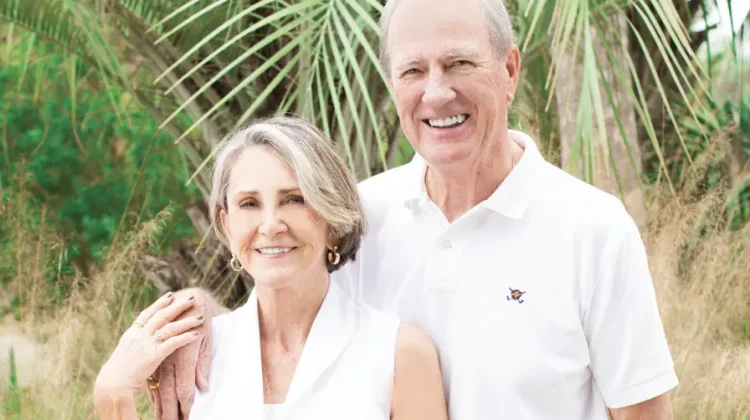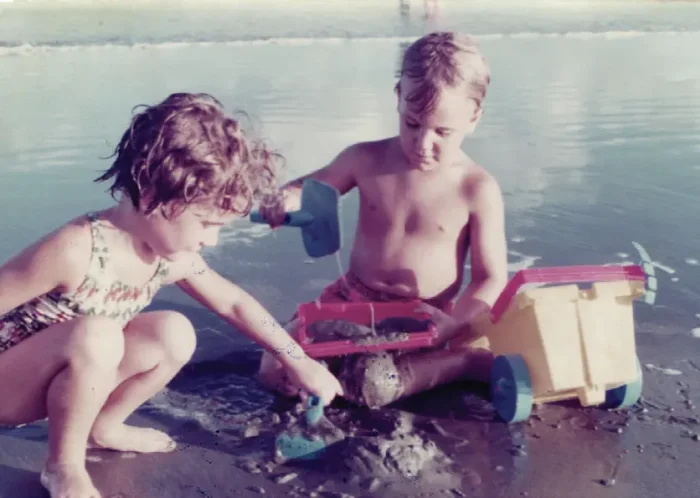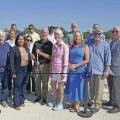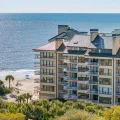
Editor’s Note: This lifestyle feature from the archives of Isle of Palms Magazine (Spring 2016) is a two-part series and the remainder will be published in our December issue.
You can hardly talk about former U.S. Rep. Tommy Hartnett without talking about the Isle of Palms. It’s not just the place he has ended up – it’s the place where he started. From childhood summers spent on the beach to his first job to the first date with his future spouse, the Isle of Palms has played a supporting role not only in Hartnett’s backstory but in who he is and what he has accomplished. Hartnett’s story is a fascinating tale of politics and family in the Lowcountry, highlighted by his six years in the U.S. House of Representatives as the first Republican elected from South Carolina’s 1st Congressional District since Reconstruction.
The Early Days
 The foundation of today’s Isle of Palms was laid in late 1944, when real estate developer J.C. Long purchased more than 1,000 acres of land and began building roads and houses, putting into motion IOP’s transformation from a small summer resort community to a permanent home for thousands of year-round residents. Hartnett was introduced early on to the island that would become such an important part of his life.
The foundation of today’s Isle of Palms was laid in late 1944, when real estate developer J.C. Long purchased more than 1,000 acres of land and began building roads and houses, putting into motion IOP’s transformation from a small summer resort community to a permanent home for thousands of year-round residents. Hartnett was introduced early on to the island that would become such an important part of his life.
“J.C. Long’s wife was my daddy’s first cousin. We called her Aunt Alberta,” Hartnett recalled. “They would give us a house on the Isle of Palms for two or three weeks every summer. My daddy being handicapped, J.C. always felt it was good for him to come out and get some island air. We would stay near their house when there were hardly any houses out there. The farthest the island went at the time was 21st Avenue. There was a public picnic ground there where you could go out and picnic, but there was nobody on the island then.”
Year after year, the family would return to the island where Hartnett and his sisters spent their days playing on the beach and their evenings watching fireflies. The amusement park on the island, with a carousel and swings, was open year-round, and there was bingo, too, but the Isle of Palms was still a strictly local retreat.
“It was very quiet – all local people. It was not any place where people came from afar to vacation with their families because there weren’t any big houses here and no air conditioning,” Hartnett said.

Later, his first job was on the island, with J.C. Long’s construction company, as was his first date with Bonnie Kennerly, his future bride.
“Our first date was a luau on Front Beach,” recalled Bonnie Hartnett. “We were chaperoned by Henry and Esther Tecklenburg, parents of Charleston Mayor John Tecklenburg. There was a fire and we roasted marshmallows and I think they cooked a pig. You could do that back then.”
Later on, the couple would go to the end of the island where Wild Dunes is now and shoot cans over the marsh. “That was where I learned to shoot, when I was dating Tommy here at the end of the island,” Bonnie Hartnett remembered.
They were married in 1965, and they decided to start their new life together on the Isle of Palms. They purchased their first house on the island but never moved in.
“We bought the house a month before we got married,” recalled Hartnett. “There was no living together then – she lived with her mom and dad and I lived with mine – but she was teaching school in North Charleston and I was working downtown. We got to thinking about it, and it just wasn’t the practical thing to do, so we sold that house before we ever moved into it.”
More than a decade later, in 1977, the couple bought another house on the Isle of Palms, this time in Wild Dunes. It was their summer home until 2011, when they became permanent residents.

Public Service Calls
By the time the Hartnetts bought their home on the Isle of Palms, Tommy was already a leader in the South Carolina Statehouse. He was a rising star in the Republican Party as well, though his political career had begun on the other side of the aisle.
In 1964, at the age of 22, Hartnett entered his first political contest, running in the Democratic primary for the State House of Representatives. He won that race as well as the general election and went on to be re-elected three more times, serving a total of eight years. He might have spent more time in Columbia, but, in 1972, the Democratic Party nominated George McGovern as its candidate for president, and he was just too liberal for Hartnett.
“I fell out with the Democrats,” Hartnett explained. “My name was already on the ballot for the June (Democratic) primary when I went to a meeting and they were asking all the candidates who they were planning on voting for president. I couldn’t lie. I said ‘I’m voting for Richard Nixon, and if me voting for Nixon means I don’t get your vote for the Statehouse, then keep your vote. I quit.’”
Local Republicans quickly recruited Hartnett to run for the State Senate, and, when he and future Gov. James B. Edwards won their seats, half of the Charleston-area Senate delegation was on the Republican side of the aisle. After two terms in the Senate, he was ready for a new challenge. When U.S. Rep. Mendel Davis announced that he would not seek re-election in 1980, Hartnett set his sights on Washington, D.C., and the U.S. House of Representatives.
The last time voters had sent a Republican to the House from Charleston was during the post-Civil War Reconstruction era in 1876, when African American Joseph Rainey was re-elected to his fourth term. Reconstruction ended the following year when federal troops were withdrawn from the South and Rainey was defeated in the election of 1878.
TO BE CONTINUED
(PART II): Mr. Hartnett Goes to Washington
By Brian Barrie




Good to see your picture!
Hard to believe our age
Remembering growing up spending the night with friend Bonnie. We we went to same school..
My how time flies!
So good to see you & Thomas picture!
Wraellen Messex Winn